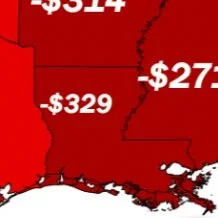The Cotton Board recently held its 2023 Annual Meeting in Durham, North Carolina, along with Cotton Incorporated’s Board of Directors. During this meeting, board members serving the Cotton Research and Promotion Program reviewed, analyzed, and voted to recommend Cotton Incorporated’s 2024 budget of $89 million to the Secretary of Agriculture. This budget recommendation reflects a $2 million increase from 2023.
Read MoreThis month’s 2023/24 U.S. corn outlook is for reduced supplies, lower domestic use, smaller exports, and tighter ending stocks. Projected beginning stocks for 2023/24 this month have been raised 55 million bushels higher based on a lower use forecast for 2022/23, reflecting reductions in corn used for exports, glucose and dextrose, and starch.
Read MoreIf you want to honor a cotton consultant, nominate him or her for the prestigious 2023 Cotton Consultant of the Year (CCOY) Award.
The 2023 CCOY recipient will be named at a special celebration Friday, March 1, 2024, at the Peabody Hotel in Memphis, Tennessee.
Read MoreAs Louisiana cotton producers move into cotton harvest season, Louisianians will see an influx of used and custom cotton harvest equipment moving into and through the state. To protect our cotton producers from the reintroduction of boll weevils, the Louisiana Department of Agriculture and Forestry (LDAF) implements restrictions for all cotton harvest equipment entering the state.
Read MoreFall armyworms, Spodoptera frugiperda, are chronic insect pests in the state, with more than 60 plants reported as hosts, including various pasture grasses (and lawns) and agronomic crops including corn, alfalfa, cotton, soybeans, grain sorghum, and rice. They migrate to Louisiana from neighboring regions like Florida, Texas, Caribbean islands, and Central-South America, with infestations most common from late July to early August.
Read MoreFor more than two decades, and over the course of the last four farm bills, farm program payments have been based on a farm’s historical planted acreage, i.e., base acres, and not on actual plantings each year. Decoupling Agriculture Risk Coverage and Price Loss Coverage farm program payments prevents farmers from making planting decisions based on expected program payments. Instead, the current system ensures farmers evaluate only market supply and demand signals and expected returns per acre when determining which crops to plant each year.
Read MoreHot weather across the cotton belt is creating uncertainty about the size of the US crop, said Shawn Wade, director of policy analysis and research at Plains Cotton Growers. “It could be anywhere between 14 million bale to 16 million bale crops. You’ve got some pretty high temperatures settling into parts of Louisiana, Mississippi.”
Read MoreIf you want to honor a cotton consultant, nominate him or her for the prestigious 2023 Cotton Consultant of the Year (CCOY) Award. Click here to access the 2023 nomination form. The deadline for nominations is August 15. If you have any questions, call Carroll Smith at 901-326-4443 or email csmith@onegrower.com.
Read MoreThe U.S. Cotton Trust Protocol today announced the appointment of Daren Abney as Executive Director. A sustainability veteran, Abney brings 15 years of international experience garnered in organizations across the apparel and fashion industry such as Better Cotton, Textile Exchange, and most recently Lenzing Group.
Read MoreThere will be a cotton/corn/soybean field tour at the Northeast Research Station in St. Joseph next Tuesday, July 25th, beginning at 5 pm. It will feature talks on row spacing, fertility, weed control, disease and insect control. It will also have one stop showing the difference between planting cotton into 2 different cover crops. There will be a meal after the tours are over.
Read MoreCotton Incorporated is conducting a Natural Resource Survey with all U.S. cotton producers. This survey will guide Cotton Incorporated's future research priorities and help document U.S. cotton production improvements. The online survey should take 25 to 35 minutes to complete, and participants who complete the survey before July 31st will be mailed a free 30oz YETI Rambler cup featuring the Seal of Cotton trademark.
Read MoreIt’s been hot and dry for the most part across most of the southern cotton belt.
Read MoreThe NCC, as well as many national/regional cotton organizations, joined 400 other agriculture groups on a letter to the House and Senate budget committees’ leadership requesting sufficient budgetary resources to write a new bipartisan, multi-year, comprehensive and meaningful farm bill.
Read MoreDespite myriad forces facing rice farmers in 2023, the U.S. Department of Agriculture’s Natural Agricultural Statistical Service (NASS) now projects that about 1.311 million acres of the crop have been planted in Arkansas. That’s nearly 200,000 more acres than were planted in 2022, according to the latest NASS report released June 30.
Nationally, about 2.687 million acres have been planted, a nearly 400,000-acre uptick since the last growing season. California ranks second in rice production with 478,000 acres, while Louisiana ranks third with about 460,000 acres.
Read MoreDuring the heat of the production season, early risers and late nighters aptly describes the nature of a crop consultant. Their day typically begins before sunup as they head out to the field to start work at first light. A cell phone, laptop, notebooks, sweep nets and drop cloths adorn their rolling office. After arriving home that night, they spend a lot of time reviewing notes, sending reports to their farmers and preparing to go again in the morning.
Read More













